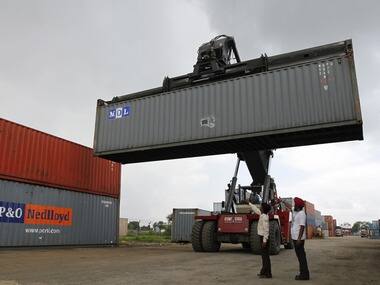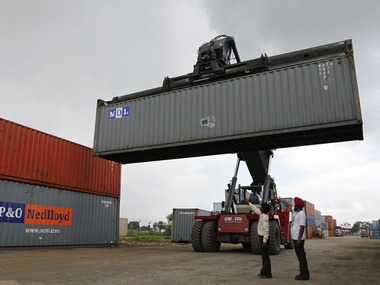Credit rating agency Moody’s is hopeful that India would manage a GDP growth rate of 7.5-8 percent for 2011-12 and inflation would slowly moderate to 7 percent over the course of the year. But its credit ratings outlook is likely to remain unchanged despite distinct possibilities of a global slowdown. For this, Moody’s gives credit to transparent monetary and fiscal policies of the country and the democratic institutions that strengthen society and the economy. However, corruption and delay in policy decisions are seen as big bottlenecks.
Though government debt levels are high and could pose a serious threat to the credit ratings, what saves the day for India is the fact that 95 percent of it is owned by domestic institutions, has a favourable repayment structure and is dominated by the rupee. One way that the government could reduce its debt burden is to curb spending on subsidies that account for 13 percent of total government spending, the report suggests.
[caption id=“attachment_77119” align=“alignleft” width=“380” caption=“One way that the government could reduce its debt burden is to curb spending on subsidies that account for 13 percent of total government spending, the report suggests.”]
 [/caption]
[/caption]
It also spends a lot of money on building social infrastructure like education and health, but the losses due to leakages and poor administration can save more money, according to the rating firm. It is also unlikely that India will stick to the growth projections made during the Budget, which means its fiscal deficit will exceed its expectations, too. The report pegs general deficit at 7.1 percent of GDP after a peak of 9.4 percent in 2009-10.
It concludes by saying the Indian economy is not immune to what’s happening abroad. But its diversified economy and exports in terms of both goods and services and destinations act as a buffer against any downturn. And the latest report by Espirito Santo is also clear that Indian GDP will not suffer to the extent global economies do, precisely why it also stood out in the last downturn.
Impact Shorts
More ShortsYes, India suffered because of global tremors last month with $2.1 billion of FII flow going out and the Sensex tumbling 8.4 percent. The reason why Indian markets suffered during 2008 was not earnings downgrades, but outflow of FII capital. And the report shows that the outflows till now in 2011 have been only 0.4 percent of 2008.
But this is where UBS does not agree. In its latest strategy report on Indian markets, UBS has cut its Sensex target from 21,000 to 19,000 and NIfty target from 6,5000 to 5,900, factoring in earnings growth of 12.5 percent for the next two fiscal years. They are concerned that FII outflows have not been significant as yet. In 2010, FII inflows have seen highs in India compared with Asian peers. But if one looks at history, it is not always that huge inflows have been followed by similar outflows. So, if there is no further significant FII outflows, the markets will find support at current levels. But if there are further outflows, the markets might correct by another 15-20 percent.
Coming to earnings outlook for Indian corporates and their exposure to the global turmoil, global trade still contributes to a small part in GDP and India is also getting less dependent on Europe and the US. The US and EU accounted for 45 percent in 2001, but only 30 percent now. Also, the global exposure is limited to specific sectors like IT or healthcare. So, while Espirito Santo expects export growth to slow, it should remain healthy at over 25 percent compared to last year.
And it is based on strong fundamentals of Indian growth story that Credit Suisse has also turned positive about as it announces in its latest report that it is “time for some selective risk taking”. By their own calculations, they feel the market has been most averse to risk taking ever since the three months that followed the Lehman crisis. But now that another “Lehman” is not sure to happen, further de-rating of the markets is unlikely. So their advice: pick your stocks.
The basic thumb rule they adopt is this: do not choose stocks that have outperformed their sector and despite weak trends in their earnings estimates. This means Tata Steel, Kotak Mahindra, Power Grid, Petronet LNG, HUL, and ACC. However, there are stocks like Reliance Industries, Axis Bank, Jindal Steel and Power, and Crompton Graves which have suffered in terms of valuations despite good fundamentals.
Despite the whiff of fresh air, Citi is not ready to be optimistic as yet as it still has a tag of “underweight” on India in its latest report.
)